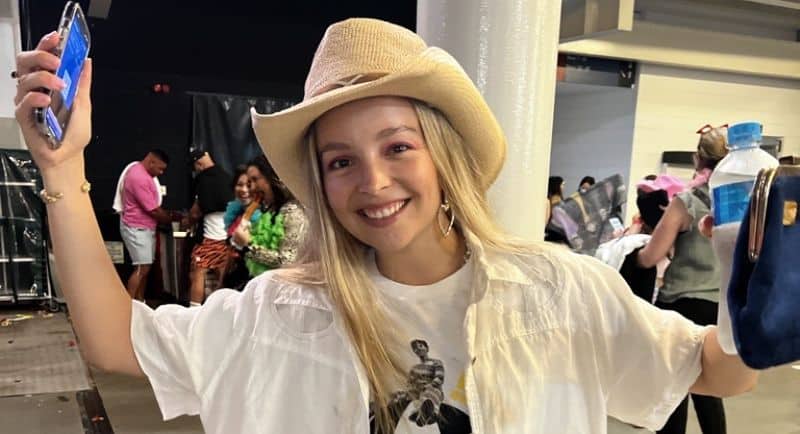‘Obsessed’ is a monthly deep dive into social and cultural trends that can help marketers inform the way they think. Led by Kate O’Loughlin, Initiative strategist and self-confessed obsessive, ‘Obsessed’ will be a magic school bus to expand marketing mindsets and help brands remain relevant amongst an ever-changing cultural landscape.
This month, I’ve been obsessed with the Met Gala.
The first Monday of May is a day forever immortalised as fashion’s Super Bowl. The Met Gala is an event held annually to raise funds for the Costume Institute of New York by tying a charity gala theme to an Institute display at The Metropolitan Museum of Art.
In 2024, the exhibition ‘Sleeping Beauties: Reawakening Fashion,’ will feature approximately 250 items drawn from the Costume Institute’s permanent collection, many of which have rarely been seen in public before.
The red carpet theme which resulted was ‘The Garden of Time’, drawing inspiration from a short story of the same name by JG Ballard.
As expected, the Met Gala once again drew the attention of the internet and brought with it a slew of armchair fashion experts to critique who was/wasn’t on theme, best/worst dressed, and many more couture critiques… me included.
It’s not purely the fashion which has piqued my interest, though, but more the broader event commentary which offers marketers insights into how consumer expectations are shifting. From the cost-of-living crisis or the rise of the influencer economy, it’s clear that what audiences want from the Met and brands alike are changing.
From double scoop to ice cream Sunday with extra sprinkles
People want drama. In the age of edging (Gen Z speak for teasing or taunting, commonly used among musical fandoms when artists tease a song live but don’t play it) it’s clear audiences are shifting towards an all or nothing approach.
The increased use of the phrase “it’s giving” is a clear example of this. If we unpack what it actually means to ‘give’, then there is theoretically an expectation of receiving something as a result of the exchange. In this context, for a look ‘to give’, the consumer is expecting to feel something as a result – good or bad.
Audiences are turning to events such as the Met Gala to judge, and if the looks are straight up boring or ‘done’ (see: commentary on JLo or Em Rata) then there is a clear air of disappointment.
People use luxury content as a form of escapism – so for the love of God, give us what we want and don’t half ass it.
From ‘I’m hooked’ to ‘who am I watching’?
No Beyonce. No Blake. No Billie.
Some of the most renowned Met celebrities chose not to attend in 2024, and consumers noticed. Be it personal choice or prior commitments, there was a collective sigh of disappointment across the live stream as the heads of some of the world’s largest fandoms didn’t appear from a black sprinter van.
Kim Kardashian alone isn’t enough. Despite a slew of the internet’s darlings attending – Barry Keoghan, Sabrina Carpenter, FKA Twigs – there was a sense of disappointment from the lack of celebrity super brands.
At the end of the day, we know that market size is still the biggest driver of brand growth. It seems the Met and celebrities are not excluded from the theory. The bigger, the better.
From formal to familiar
While this isn’t specific to the Met, the 2024 event was demonstrative of the consumer demand for interviews and perspectives from (often untrained) media entertainment stars. From Emma Chamberlain’s iconic 2022 Met interview with Jack Harlow, to Amelia Dimoldenberg of ‘Chicken Shop Date’’s famed interviews across the GQ red carpets, the rise of influencers as journalists continues.
For the Met in 2024, TikTok worked with influencers such as @tefi and @guywithamoviecamera to ask the hard-hitting questions such as which movie character Jeff Goldblum would like to invite to the Met (Petra from The Bitter Tears of Petra Von Kant, of course!).
While generic questions like “What are you looking forward to tonight?” persist, the familiarity and casualness across interviews is hard to ignore.
The celebrities seem to enjoy and almost play to the relaxed nature of them, leaving the usually serious tone of televised red carpet coverage in the dust.
Consumers are looking to brands to take ownership of their tone. In interviews, they want people to ask the weird and wonderful questions that we’re all thinking. So the more approachable and colloquial we can make our comms, the better.
While the role of events like the Met Gala in promoting opulence and a class divide is rightly questionable, and potentially losing relevance, we can’t look past the way it teaches us what consumers want from brands.
The next time a video of a sit-at-home fashion critique pops up in your feed, pause and listen to what they have to say.
See also:
Kate O’Loughlin: Jojo Siwa’s rebrand proves marketers should commit to the bit
Kate O’Loughlin: Marketing lessons from the rise of run clubs
Kate O’Loughlin: The Carnival World Cruise: brand titanic… or life raft?
Top image: Kate O’Loughlin

